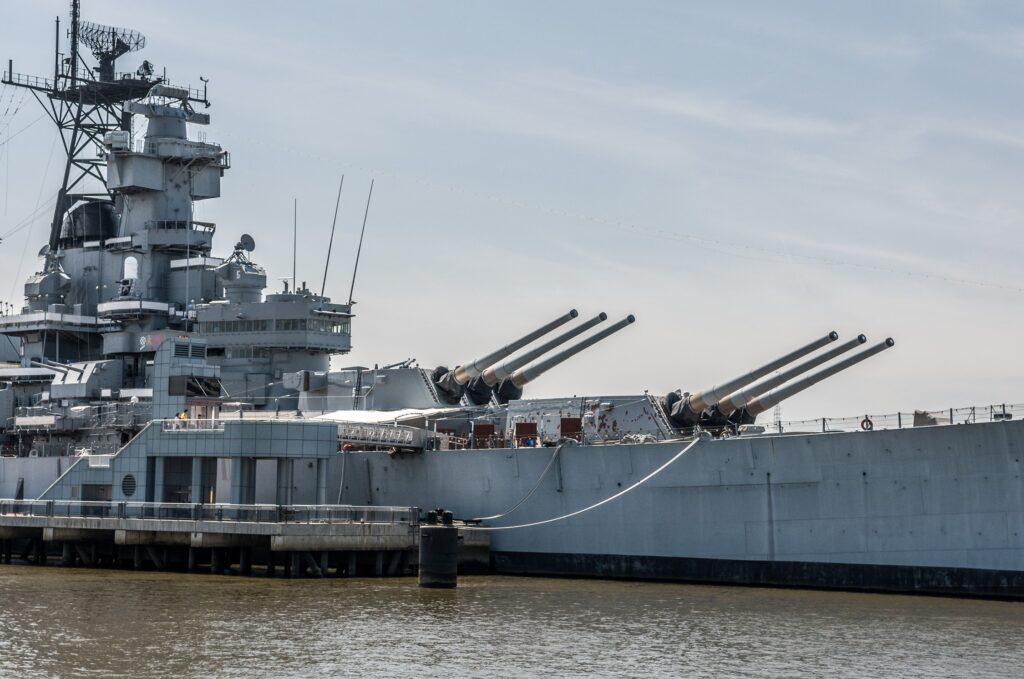
Throughout the majority of American naval history, naval battles took place in an organized manner, with ships facing off and bombarding each other with cannon and gunfire. When ship-to-ship fighting was commonplace, the two most important aspects of a war vessel were the number of weapons it could hold and the extent of its armor. With a large number of guns firing broadside, any ship of the line could destroy an enemy’s hull, wrecking her rigging, and capture her crew. However, during this period of history, the range of guns and cannons was limited, meaning navies had to get within close range of each other in order to land any blows. This proved challenging for military forces who hoped to limit damage to their own ship while keeping their enemy in range. In response, naval forces throughout the world began a race to develop a ship that could withstand enemy fire while holding a large arsenal of cannons and long-range guns.
Although no battleships remain in service within the United States Navy, their significance within the United States naval history is beyond dispute. USS Hornet Museum Education Director, Heidi Schave, has spent the last fourteen years teaching students and visitors about the significance of battleships throughout the 19th and 20th centuries and their role in influencing modern aircraft carriers. Today, Heidi Schave will discuss the battleship’s origin and the creation of the United States Navy’s first battleship, the USS Texas.
By the late 1880s, the United States was alarmed by the proximity of Argentina, Brazil, and Chile’s European-built warships. In response to the possibility of these warships operating in American waters, America’s Naval Consulting Board began plans for acquiring “ironclads” or battleships of their own. The board requested that these American ironclads be able to use all American naval bases and meet a minimum speed of 17 knots. Within six years, American naval engineers were able to meet these requirements and, in 1892, created the first American, the USS Texas. The USS Texas, measured just over 308 feet, displaced 6,300 long tons, reached speeds of 17.8 knots, and was armed with two 35-caliber 12 inch primary and six 30 caliber 6-inch secondary guns.
Due to the issues plaguing the US industry at the time of the USS Texas’s creation, the battleship was already out of date by the time it was finished. However, the USS Texas remains one of the most prominent ships within American naval history and continues to impact naval advancements today.


